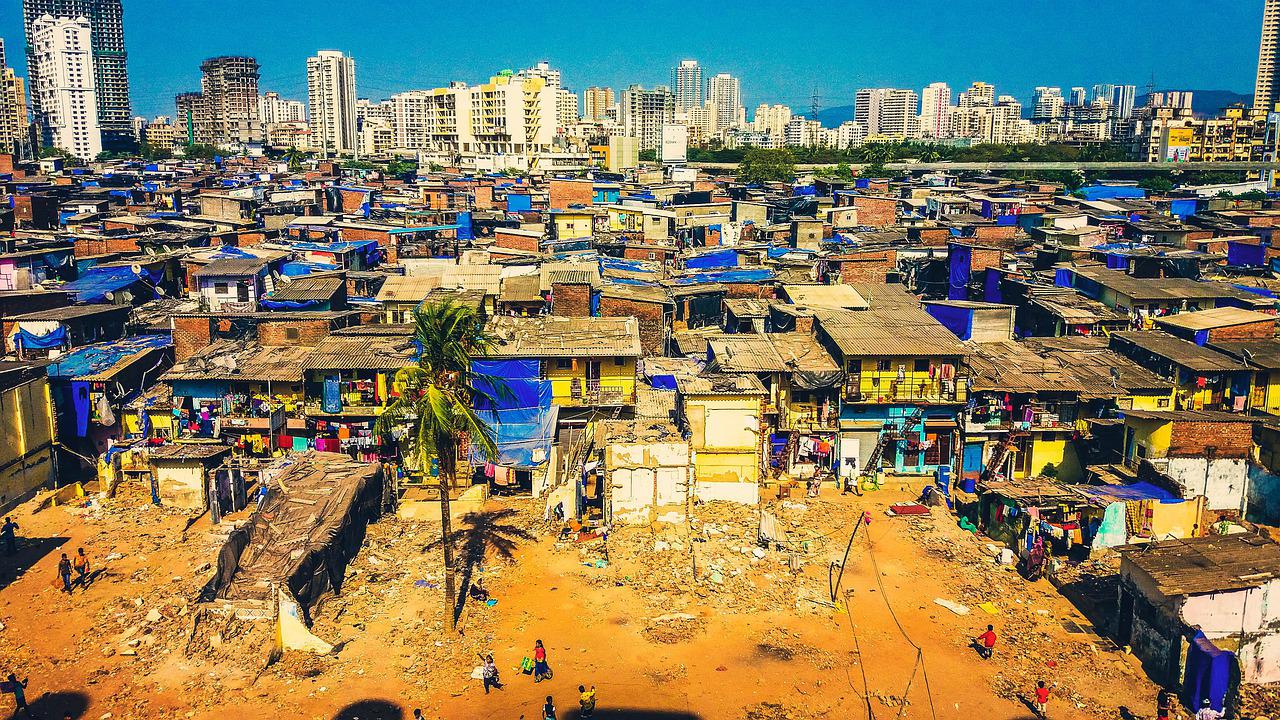Dedicated locality research platform

Originating from London, the word “slum” means an area of a city where living conditions are extremely bad, where the buildings are dirty which have not been repaired for a long time, a very poor and crowded area, especially of a city. The United Nations Habitat program defines slums as informal settlements that lack one or more of the following five conditions: access to clean water, access to improved sanitation, sufficient living area that is not overcrowded, durable housing and secure tenure.
An estimated 6.5 million people, around 55 percent of Mumbai’s total population, live in slums. Surveys state that Mumbai’s slums occupy 12 percent of its total geographic area and up to a quarter of the available construction area in the city. Dharavi Slum is known as the world’s most densely populated slum existing within an area of just over 2.1 square kilometres. In Mumbai, slums are notified or recognized by the government if they were settled on state or city government-owned land prior to 2000. Nearly half of Mumbai’s slums are non-notified, meaning they have no security of land tenure and are not entitled to access city services like connections to the water supply and sanitation.
Most slum houses do not have individual toilets and taps. Residents must pay to use community toilets which are rarely maintained and buy overpriced water from vendors. Some 78 percent of community toilets in Mumbai’s slums lack water supply and 58 percent have no electricity. Many slum houses do not have proper doors. The need of the hour is to reintegrate them by providing all the necessities and civic amenities to these slum dwellers. From a Real Estate point of view, this is where the Slum Rehabilitation Authority steps in.
Slum Rehabilitation Authority (SRA)
The Slum Rehabilitation Authority (SRA) is a planning authority formed under the Slum Rehabilitation Act in December 1995. It was established to serve as a planning authority for all slum areas in the jurisdiction of Municipal Corporation of Greater Mumbai. The Chief Minister of Maharashtra, Shri Uddhav Thackeray is the Chairperson of SRA, and IAS Officer Shri Satish Lokhande is the full-time Chief Executive Officer of the Authority.
The vision of Slum Rehabilitation Authority is simple: a “Slum Free Mumbai”. The Slum Rehabilitation Authority endeavours to implement slum rehabilitation schemes by providing a single window clearance for all types of approvals. The authority is responsible for surveying and reviewing the existing positions of slums in Mumbai, formulating, and implementing schemes for the rehabilitation of slum areas and all other acts and things as may be necessary for achieving the objective of rehabilitation of slums. It is also responsible for preparing and submitting proposals for the modification to the Development Plan of Greater Mumbai.
The Slum Rehabilitation authority undertakes activities such as assisting slum dwellers in forming co-operative societies, assisting in certification of eligibility of slum-dwellers, taking punitive action on non-participating slum-dwellers obstructing the scheme, survey, and measurement on slum lands grant of building permissions, leasing of rehabilitation plots and free-sale plots and updating of property cards (PR cards) and more.
SRA in Mumbai
The Maharashtra government has recently increased the floor space index (FSI), or the permissible development on a plot, to 4 times from 3 across the state for slum-rehabilitation projects in Mumbai City. This FSI policy is meant to incentivise developers in other cities to come forward and take up slum redevelopment, which will help in decongestion of the crowded cities. The Slum Rehabilitation Authority is expected to roll out an amnesty scheme to revive and complete the 380 stalled projects. Under it, financial institutions (FIs) like non-banking financial institutions and others who have invested in the Slum Rehabilitation projects that are stuck or stalled will be allowed to redevelop without any major penalty. Further, the time frame within which a former slum dweller can sell his or her tenement after it has been demolished (as part of a SRA scheme) has been reduced from ten years to five years.
“Views expressed are the views of Propscience.com. Any action taken based on the views will be the responsibility of the user alone”